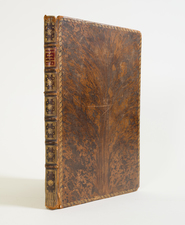Search
José Antonio de Armona y Murga was a Spanish noble, official, writer and historian. He served for many years as the Mayor of Madrid and was on of the most prolific historians and chroniclers of the period in Spain.
Armora studied with the Jesuits until he went to Seville with his older brother, who worked in the Treasury. Another of his three brothers, Matías, went on to a distinguished military career.
During the reign of Fernando VI, Armona served as Accountant of the Almojarifazgo (customs tax) in Huelva. In 1763, he was sent to Trujilloto.
From 1764 to 1776, he served the Spanish crown in Havana, where oversaw the Cuban treasury and reorganized the postal system. Upon returning to Spain in 1776 he was Mayor of Galicia for a few months and finally King Carlos III appointed him Mayor of Madrid (1777-1792), a position that included those of Intendant of the Royal Armies and of the Province of Madrid, General Superintendent of the Sisas Guard of Madrid, Intendant of the Regalia de Aposento and Judge Protector of the Theater. He served in this position for a number of years and was widely considered as incorruptable.
Armona sponsored the Astronomical Observatory, the Botanical Garden, and the Academy of History.
Passionate about popular entertainment such as bullfights, dances and the theater, he protected actors and dancers, created companies, organized events and celebrations and, in short, became a very popular figure, also due to his ability to manage municipal deposits , which prevented the hunger of the humble classes after a succession of bad harvests at the end of the century at the cost of their confrontation with bakers and landowners. He improved begging by regulating that the poor from other provinces return to their original places and that those who did not want to work joined the army. He improved the Teatros del Príncipe (current Teatro Español ) and de la Cruz and ordered the refurbishment of the Coliseo de los Caños del Peral , the predecessor of the current Teatro Real .
The Madrid City Council named a street after him that joins the Paseo de Santa María de la Cabeza with the Ronda de Valencia.
He assembled a large library of which his General Index remains and left numerous manuscript works and a copious epistolary when he died.

